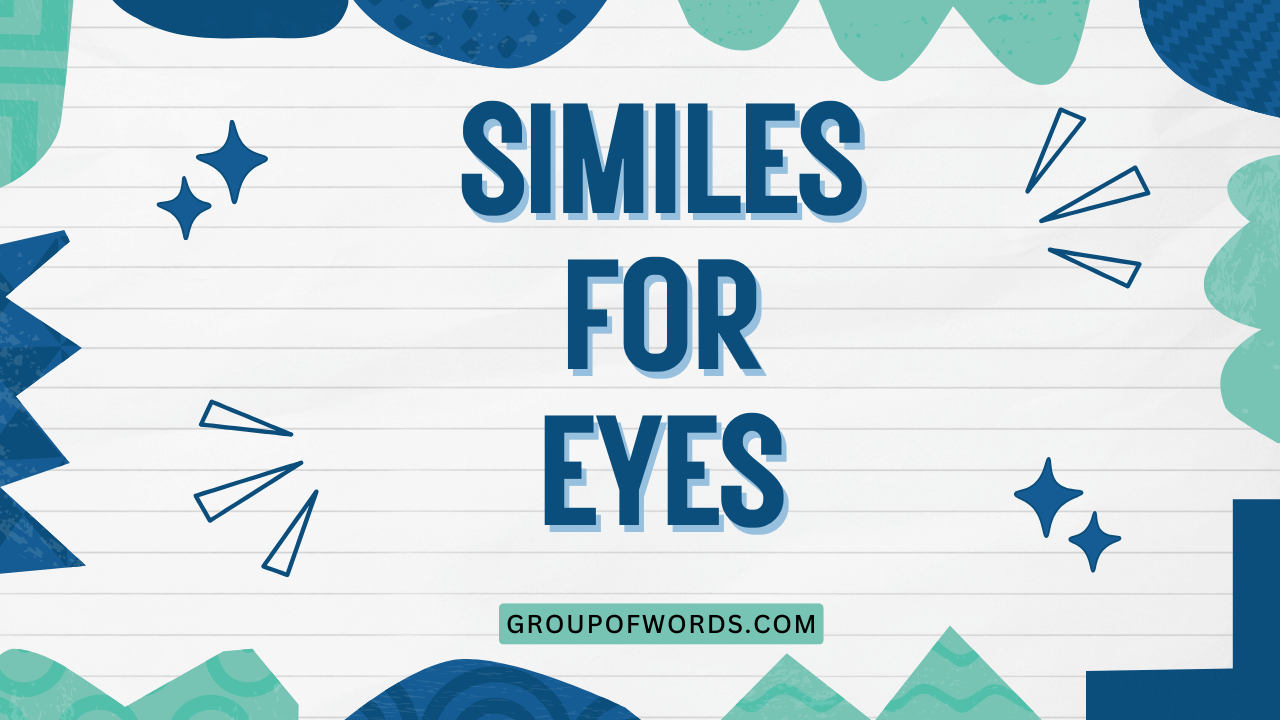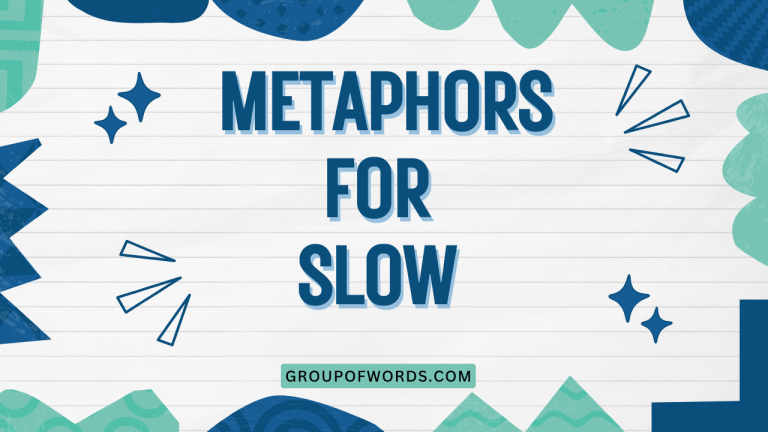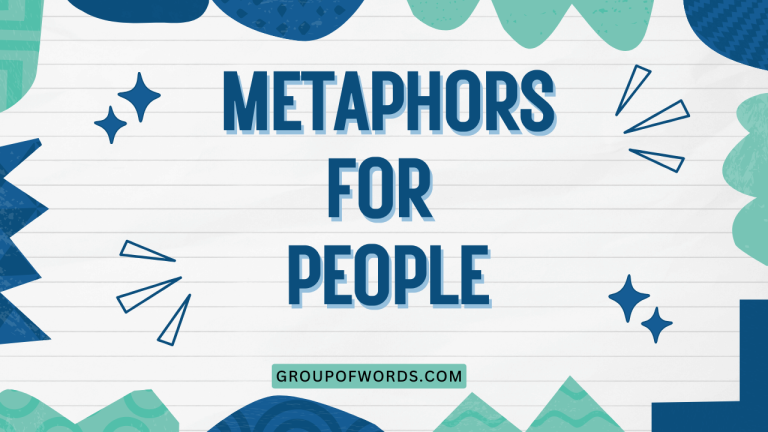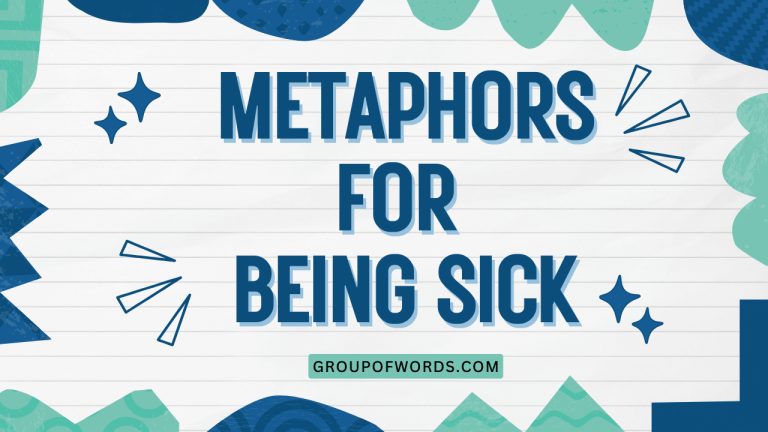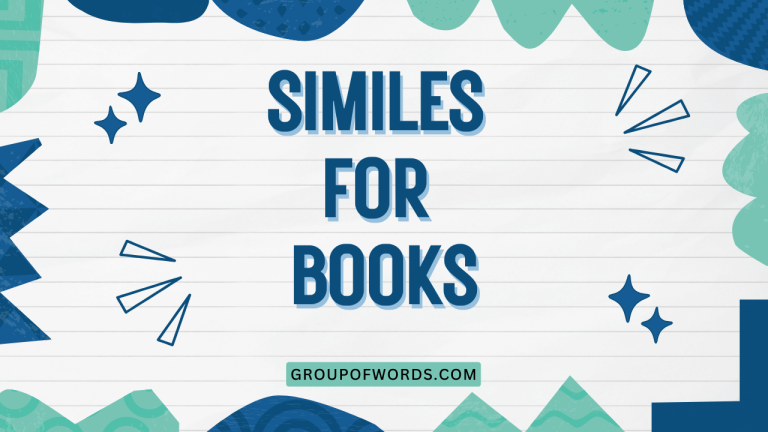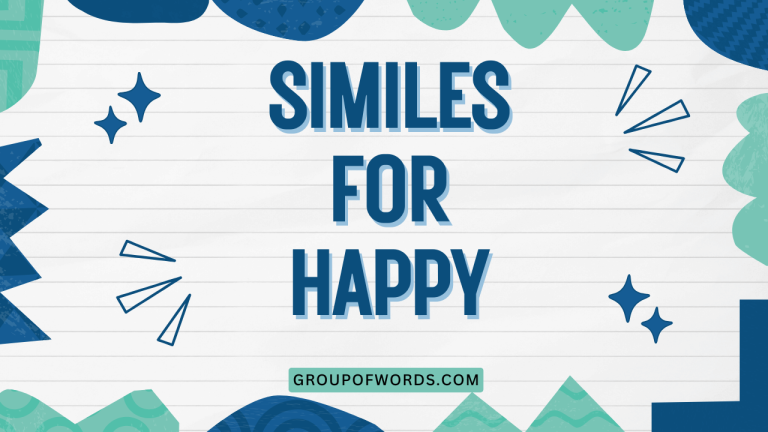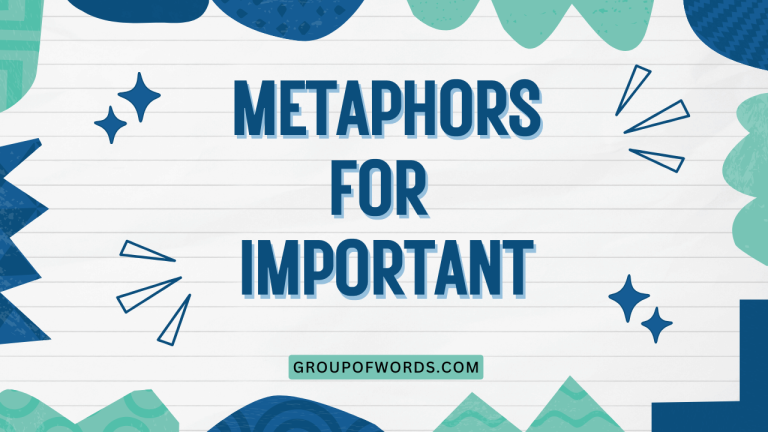Eyes as Windows: Mastering Similes for Describing Eyes
Using similes to describe eyes can add depth, emotion, and vivid imagery to your writing. This article delves into the art of crafting effective similes for eyes, exploring their structure, various categories, and usage rules.
Whether you’re a student, writer, or language enthusiast, this guide will enhance your ability to create compelling descriptions and master this aspect of English grammar. Understanding similes for eyes not only improves your descriptive writing skills but also enhances your overall appreciation of figurative language.
Table of Contents
- Introduction
- Definition of Simile
- Structural Breakdown of Similes
- Categories of Eye Similes
- Examples of Similes for Eyes
- Usage Rules for Similes
- Common Mistakes When Using Similes
- Practice Exercises
- Advanced Topics in Similes
- Frequently Asked Questions
- Conclusion
Definition of Simile
A simile is a figure of speech that compares two unlike things using the words “like” or “as.” Its primary function is to create a vivid and imaginative connection between the subject and the object of comparison. Similes enrich language by making descriptions more engaging and relatable. Understanding similes is crucial for effective communication and creative writing. They are frequently used in literature, poetry, and everyday conversation to add color and depth to language.
In the context of describing eyes, a simile can help convey not only the physical appearance of the eyes but also the emotions, personality, or inner state of the person. A well-crafted simile can transform a mundane description into a memorable image.
For example, instead of simply saying “her eyes were blue,” one could say “her eyes were as blue as the summer sky,” creating a much more powerful and evocative image.
Structural Breakdown of Similes
A simile typically consists of three main components: the subject (the thing being described), the linking word (either “like” or “as”), and the object of comparison (the thing the subject is being compared to). Understanding these components is essential for constructing effective similes.
The basic structure is: Subject + Linking Word + Object of Comparison. For example, in the simile “Her eyes were like shining stars,” “her eyes” is the subject, “like” is the linking word, and “shining stars” is the object of comparison.
The effectiveness of a simile depends on the relevance and vividness of the object of comparison. A strong simile creates a clear and impactful connection in the reader’s mind.
Consider the following table illustrating the structural components of similes:
| Component | Example | Explanation |
|---|---|---|
| Subject | Her eyes | The entity being described. |
| Linking Word | like | The word that connects the subject and object of comparison. |
| Object of Comparison | shining stars | The entity to which the subject is being compared. |
| Complete Simile | Her eyes were like shining stars. | The complete simile, bringing all components together. |
Categories of Eye Similes
Similes for eyes can be categorized based on the aspect of the eyes they describe. These categories include color, shape, size, emotion, texture, and clarity.
Each category offers a unique way to enhance descriptions and evoke specific imagery.
Similes Describing Color
Color similes compare the color of the eyes to something else. These are among the most common and effective ways to describe eyes.
They help the reader visualize the exact shade and tone of the eyes being described. These similes can evoke specific moods or associations depending on the color being described.
Examples include: “Her eyes were as blue as the ocean,” “His eyes were like emeralds,” and “Her eyes were as brown as rich mahogany.”
Similes Describing Shape
Shape similes focus on the form or contour of the eyes. They can convey whether the eyes are round, almond-shaped, or narrow.
These similes often add a subtle layer of detail to the description, helping the reader to visualize the eyes more accurately.
Examples include: “Her eyes were like almonds,” “His eyes were shaped like crescent moons,” and “Her eyes were like small, round buttons.”
Similes Describing Size
Size similes describe how large or small the eyes are. They can emphasize the prominence or subtlety of the eyes.
These similes often contribute to the overall impression of the character or subject being described.
Examples include: “Her eyes were like saucers,” “His eyes were as tiny as pinholes,” and “Her eyes were like large, expressive pools.”
Similes Describing Emotion
Emotional similes convey the feelings or mood reflected in the eyes. They often describe the expression or the way the eyes convey emotion.
These similes are particularly powerful for creating a sense of connection with the character or subject.
Examples include: “Her eyes were like burning coals of anger,” “His eyes were as cold as ice,” and “Her eyes were like shining beacons of joy.”
Similes Describing Texture
Texture similes describe the surface or quality of the eyes, such as their smoothness or sparkle. These similes add a tactile dimension to the description, making it more vivid and engaging.
They can evoke a sense of depth and realism in the portrayal of the eyes.
Examples include: “Her eyes were like polished stones,” “His eyes were as glassy as marbles,” and “Her eyes were like velvet in the dim light.”
Similes Describing Clarity
Clarity similes describe how clear or bright the eyes are. They often convey the purity or transparency of the eyes.
These similes can suggest a sense of innocence, wisdom, or insight.
Examples include: “Her eyes were as clear as crystal,” “His eyes were like a still, clear pond,” and “Her eyes were as bright as diamonds.”
Examples of Similes for Eyes
The following tables provide a comprehensive collection of similes for describing eyes, organized by category. Each table includes a variety of examples to inspire your writing and enhance your understanding of simile usage.
Table 1: Color Similes
This table provides examples of similes that describe the color of eyes, comparing them to various objects and elements to create vivid imagery.
| Simile | Description |
|---|---|
| Her eyes were as blue as the summer sky. | Describes bright, clear blue eyes. |
| His eyes were like the deep blue sea. | Conveys a deep, intense blue color. |
| Her eyes were as green as emeralds. | Describes vibrant green eyes. |
| His eyes were like jade stones. | Conveys a softer, more muted green. |
| Her eyes were as brown as chestnuts. | Describes a warm, rich brown color. |
| His eyes were like dark chocolate. | Conveys a deep, dark brown. |
| Her eyes were as gray as a stormy sea. | Describes a cool, somber gray. |
| His eyes were like silver coins. | Conveys a bright, metallic gray. |
| Her eyes were as hazel as autumn leaves. | Describes a mix of brown and green. |
| His eyes were like amber gems. | Conveys a warm, golden-brown. |
| Her eyes were as violet as lavender fields. | Describes a soft, delicate purple. |
| His eyes were like amethyst crystals. | Conveys a deeper, richer purple. |
| Her eyes were as red as rubies. | Describes an intense, fiery red (rare, but possible in certain conditions). |
| His eyes were like molten copper. | Conveys a metallic, reddish-brown. |
| Her eyes were as golden as honey. | Describes a warm, bright yellow. |
| His eyes were like topaz stones. | Conveys a translucent, golden-yellow. |
| Her eyes were as black as night. | Describes a deep, dark black. |
| His eyes were like obsidian glass. | Conveys a reflective, dark black. |
| Her eyes were as clear as a mountain lake reflecting the sky. | A more complex simile, describing clarity and color. |
| His eyes were like pools of liquid gold. | Combines color with a sense of liquid movement. |
| Her eyes were as blue as sapphires. | Describes a deep, precious blue. |
| His eyes were like the color of a robin’s egg. | Conveys a specific, delicate blue. |
| Her eyes were as green as fresh spring grass. | Describes a vibrant, lively green. |
| His eyes were like the green of aged moss. | Conveys a muted, earthy green. |
Table 2: Emotional Similes
This table provides examples of similes that describe the emotions reflected in eyes, helping to convey the inner state of a character or subject.
| Simile | Description |
|---|---|
| Her eyes were like burning coals of anger. | Describes intense rage. |
| His eyes were as cold as ice. | Conveys a lack of emotion or warmth. |
| Her eyes were like shining beacons of joy. | Describes overwhelming happiness. |
| His eyes were as empty as a vacant room. | Conveys a sense of sadness or despair. |
| Her eyes were like pools of sorrow. | Describes deep sadness or grief. |
| His eyes were as bright as stars with excitement. | Conveys a sense of anticipation and eagerness. |
| Her eyes were like mirrors reflecting fear. | Describes visible terror. |
| His eyes were as sharp as daggers with suspicion. | Conveys distrust and wariness. |
| Her eyes were like a gentle flame of compassion. | Describes empathy and kindness. |
| His eyes were as hard as stone with determination. | Conveys resolve and strength. |
| Her eyes were like a window to her soul. | A classic simile, conveying honesty and openness. |
| His eyes were as guarded as a fortress. | Conveys secrecy and defensiveness. |
| Her eyes were like a storm of conflicting emotions. | Describes inner turmoil and confusion. |
| His eyes were as calm as a tranquil lake. | Conveys peace and serenity. |
| Her eyes were like sparkling diamonds of amusement. | Describes lighthearted joy and laughter. |
| His eyes were as deep as the ocean with contemplation. | Conveys thoughtful reflection. |
| Her eyes were like a silent scream of agony. | Describes intense pain and suffering. |
| His eyes were as hopeful as a sunrise. | Conveys optimism and expectation. |
| Her eyes were like a soft glow of contentment. | Describes peaceful satisfaction. |
| His eyes were like a dark abyss of despair. | Conveys profound hopelessness. |
| Her eyes danced like fireflies with delight. | Describes playful joy. |
| His eyes were clouded like a misty morning with confusion. | Conveys bewilderment and uncertainty. |
| Her eyes were as sharp as a hawk’s with focus. | Describes intense concentration. |
| His eyes were as gentle as a lamb’s with affection. | Conveys tenderness and care. |
Table 3: Shape and Size Similes
This table provides examples of similes that describe the shape and size of eyes, adding detail to the physical description.
| Simile | Description |
|---|---|
| Her eyes were like almonds. | Describes almond-shaped eyes. |
| His eyes were shaped like crescent moons. | Conveys a curved, delicate shape. |
| Her eyes were like small, round buttons. | Describes small, circular eyes. |
| His eyes were like saucers. | Conveys large, wide eyes. |
| Her eyes were as tiny as pinholes. | Describes very small eyes. |
| His eyes were like large, expressive pools. | Conveys large, captivating eyes. |
| Her eyes were as wide as an owl’s. | Describes very large, round eyes. |
| His eyes were like slits in a mask. | Conveys narrow, piercing eyes. |
| Her eyes were like perfect circles. | Describes perfectly round eyes. |
| His eyes were as narrow as a cat’s. | Conveys a feline, slender shape. |
| Her eyes were like upturned crescents when she smiled. | Describes the shape change when smiling. |
| His eyes were as deep-set as caves. | Conveys eyes that are set far back in the face. |
| Her eyes were like sparkling dew drops. | Describes small, bright eyes. |
| His eyes were as hooded as a falcon’s. | Conveys a partially covered, intense look. |
| Her eyes were like a deer’s, large and gentle. | Describes large, innocent eyes. |
| His eyes were as piercing as a hawk’s. | Conveys sharp, penetrating eyes. |
| Her eyes were as round and innocent as a child’s. | Describes large, expressive eyes. |
| His eyes were like beads, small and dark. | Conveys small, dark eyes. |
| Her eyes were as oval as a cat’s. | Describes oval-shaped eyes. |
| His eyes were like two buttons on a teddy bear. | Conveys small, cute eyes. |
| Her eyes were luminous, like full moons. | Describes large, bright eyes. |
| His eyes, when narrowed, were like daggers. | Conveys intense, focused eyes. |
| Her eyes were framed by lashes as thick as a curtain. | Describes the eyelashes, influencing the perception of the eyes. |
| His eyes were as expressive as an actor’s. | Conveys eyes that are very good at showing emotion. |
Table 4: Texture and Clarity Similes
This table provides examples of similes that describe the texture and clarity of eyes, adding depth and realism to the description.
| Simile | Description |
|---|---|
| Her eyes were like polished stones. | Describes smooth, refined eyes. |
| His eyes were as glassy as marbles. | Conveys a smooth, reflective surface. |
| Her eyes were like velvet in the dim light. | Describes a soft, rich texture. |
| His eyes were as clear as crystal. | Conveys purity and transparency. |
| Her eyes were like a still, clear pond. | Describes a calm, reflective surface. |
| His eyes were as bright as diamonds. | Conveys brilliance and sparkle. |
| Her eyes were as murky as a swamp. | Describes a lack of clarity. |
| His eyes were like fogged glass. | Conveys a hazy, unclear appearance. |
| Her eyes were as radiant as the sun. | Describes a bright, glowing quality. |
| His eyes were like liquid mercury. | Conveys a shimmering, fluid texture. |
| Her eyes were as clear as a freshly cleaned window. | Describes impeccable clarity. |
| His eyes were like aged parchment, showing the wisdom of years. | Conveys the texture of old age. |
| Her eyes were as sparkling as champagne. | Describes a bubbly, lively texture. |
| His eyes were like looking into deep space, dark and endless. | Conveys a dark, profound clarity. |
| Her eyes were as smooth as river stones. | Describes a polished, serene texture. |
| His eyes were as reflective as mirrors. | Conveys a surface that reflects light perfectly. |
| Her eyes were like pools of light. | Describes a bright, illuminating quality. |
| His eyes were as opaque as milk. | Conveys a lack of transparency. |
| Her eyes were as luminous as stars. | Describes a soft, glowing brightness. |
| His eyes were like the surface of a still lake at dawn. | Conveys a clear, reflective quality. |
| Her eyes shimmered like the surface of a heat wave. | Describes a wavering, reflective texture. |
| His eyes were as impenetrable as a fortress wall. | Conveys a lack of clarity and emotional depth. |
| Her eyes shone like beacons in the night. | Describes a bright, guiding quality. |
| His eyes were as dull as tarnished silver. | Conveys a lack of vibrancy. |
Usage Rules for Similes
When using similes, it’s important to ensure that the comparison is both logical and effective. The object of comparison should have a clear and relevant connection to the subject being described.
Avoid clichés and strive for originality to create a memorable image. Always consider the context and the overall tone of your writing when choosing a simile.
Key Rules:
- Relevance: The comparison must be relevant and make sense.
- Originality: Avoid overused similes.
- Clarity: The simile should enhance understanding, not confuse the reader.
- Context: The simile should fit the tone and style of the writing.
Consider the following table of good and bad simile examples:
| Category | Good Simile | Bad Simile | Explanation |
|---|---|---|---|
| Color | Her eyes were as blue as the summer sky. | Her eyes were as blue as blue. | The good simile provides a specific and vivid image, while the bad simile is redundant. |
| Emotion | His eyes were like burning coals of anger. | His eyes were like fire. | The good simile provides a specific emotion, while the bad simile is too vague. |
| Shape | Her eyes were like almonds. | Her eyes were like eyes. | The good simile provides a specific shape, while the bad simile is redundant. |
| Clarity | His eyes were as clear as crystal. | His eyes were as clear as water. | Crystal provides a stronger image of clarity than general water. |
Common Mistakes When Using Similes
One common mistake is using clichés or overused similes, which can make your writing sound unoriginal and predictable. Another mistake is creating comparisons that are illogical or unclear.
It’s also important to avoid mixing metaphors and similes, as this can create confusion. Always ensure that the comparison enhances the description rather than detracting from it.
Common Errors:
- Clichés: Using overused similes like “as blind as a bat.”
- Illogical Comparisons: Creating comparisons that don’t make sense.
- Mixed Metaphors: Confusing metaphors and similes.
- Lack of Clarity: Using similes that confuse the reader.
See the table below for examples of common mistakes and their corrections:
| Mistake | Incorrect Simile | Corrected Simile | Explanation |
|---|---|---|---|
| Cliché | Her eyes were as blind as a bat. | Her eyes were as clouded as a misty morning. | The corrected simile is more original and descriptive. |
| Illogical Comparison | His eyes were like a bicycle. | His eyes were like shining stars. | The corrected simile creates a logical and relevant comparison. |
| Mixed Metaphor | Her eyes were a window to her soul, shining like the sun. | Her eyes were like a window to her soul. | The corrected simile avoids mixing metaphors and similes. |
| Lack of Clarity | His eyes were like something. | His eyes were like deep pools of thought. | The corrected simile provides a clear and specific image. |
Practice Exercises
Test your understanding of similes with the following exercises. Identify the type of simile used in each sentence and rewrite the sentences to create your own similes.
Exercise 1: Identifying Simile Types
Identify the type of simile (color, emotion, shape, size, texture, or clarity) used in each sentence.
| Question | Answer |
|---|---|
| 1. Her eyes were as green as emeralds. | Color |
| 2. His eyes were like burning coals of anger. | Emotion |
| 3. Her eyes were like almonds. | Shape |
| 4. His eyes were like saucers. | Size |
| 5. Her eyes were like polished stones. | Texture |
| 6. His eyes were as clear as crystal. | Clarity |
| 7. Her eyes were like pools of sorrow. | Emotion |
| 8. His eyes were as tiny as pinholes. | Size |
| 9. Her eyes were as hazel as autumn leaves. | Color |
| 10. His eyes were like fogged glass. | Clarity |
Exercise 2: Rewriting Similes
Rewrite the following sentences using your own similes for eyes.
| Question | Answer |
|---|---|
| 1. Her eyes were as blue as the summer sky. | Her eyes were like the deep ocean at twilight. |
| 2. His eyes were like burning coals of anger. | His eyes blazed like a furnace with rage. |
| 3. Her eyes were like almonds. | Her eyes were shaped like delicate willow leaves. |
| 4. His eyes were like saucers. | His eyes were as large as two silver dollars. |
| 5. Her eyes were like polished stones. | Her eyes gleamed like freshly watered pebbles. |
| 6. His eyes were as clear as crystal. | His eyes sparkled like a mountain spring. |
| 7. Her eyes were like pools of sorrow. | Her eyes were filled with a sadness as deep as a forgotten well. |
| 8. His eyes were as tiny as pinholes. | His eyes were so small they seemed like mere dots on his face. |
| 9. Her eyes were as hazel as autumn leaves. | Her eyes mirrored the warm colors of a forest floor in autumn. |
| 10. His eyes were like fogged glass. | His eyes were as opaque as a cloudy mirror. |
Exercise 3: Creating Similes from Scratch
Create your own similes for eyes based on the following prompts:
| Prompt | Example Answer |
|---|---|
| 1. Describe eyes filled with love. | Her eyes were as warm as sunlight on a spring morning, filled with love. |
| 2. Describe eyes filled with fear. | His eyes were like a trapped animal’s, wide and filled with fear. |
| 3. Describe old, wise eyes. | Her eyes were like ancient maps, etched with the wisdom of years. |
| 4. Describe cold, unfeeling eyes. | His eyes were as cold as the arctic wind, devoid of any warmth. |
| 5. Describe bright, cheerful eyes. | Her eyes sparkled like a sky full of stars on a clear night, bright and cheerful. |
| 6. Describe tired, weary eyes. | His eyes were as heavy as stones, reflecting the weariness of a long journey. |
| 7. Describe mischievous eyes. | Her eyes twinkled like playful sprites, filled with mischief. |
| 8. Describe innocent eyes. | His eyes were as pure as a mountain stream, reflecting innocence. |
| 9. Describe intense, focused eyes. | Her eyes were as sharp as a laser beam, focused and intense. |
| 10. Describe sad, tearful eyes. | His eyes were like rain-filled clouds, heavy with sadness and ready to burst into tears. |
Advanced Topics in Similes
For advanced learners, exploring more complex aspects of similes can further enhance their writing skills. This includes understanding the use of extended similes, where the comparison is developed over several sentences or paragraphs.
Additionally, analyzing the cultural and historical context of similes can provide deeper insights into their meaning and impact. Experimenting with unconventional comparisons and pushing the boundaries of figurative language can lead to truly unique and memorable descriptions.
Understanding the subtle differences between similes and metaphors is also crucial for mastering figurative language.
Extended Similes: A detailed comparison that unfolds over several sentences.
Cultural Context: Understanding how cultural references affect simile interpretation.
Unconventional Comparisons: Using unexpected objects for comparison to create unique imagery.
Simile vs. Metaphor: Recognizing the nuances between direct and implied comparisons.
Frequently Asked Questions
Q1: What is the difference between a simile and a metaphor?
A: A simile compares two things using “like” or “as,” while a metaphor directly equates two things without using these words. For example, “Her eyes were like shining stars” is a simile, whereas “Her eyes were shining stars” is a metaphor.
Metaphors imply a stronger, more direct connection than similes.
Q2: How can I avoid using clichés in my similes?
A: To avoid clichés, try to think of original and unexpected comparisons. Brainstorm a range of possibilities before settling on the most effective one.
Consider your personal experiences and observations to create unique imagery. Read widely and pay attention to how other writers use figurative language.
Q3: Can a simile be too complex or confusing?
A: Yes, a simile can be too complex if it uses obscure references or creates a comparison that is difficult to understand. The goal of a simile is to enhance clarity and create a vivid image, so it should be easily accessible to the reader.
If a simile requires too much explanation, it may not be effective.
Q4: How do I choose the right object of comparison for a simile?
A: Choose an object of comparison that has a clear and relevant connection to the subject you are describing. Consider the specific qualities you want to emphasize and select an object that embodies those qualities.
Think about the overall tone and style of your writing and choose an object that fits appropriately.
Q5: Can similes be used in formal writing?
A: Yes, similes can be used in formal writing, but they should be used sparingly and with careful consideration. Avoid overly flowery or informal similes and choose comparisons that are appropriate for the tone and audience.
In formal writing, similes should enhance understanding and add depth without distracting from the main message.
Q6: What is an extended simile, and how is it used?
A: An extended simile is a detailed comparison that unfolds over several sentences or even paragraphs. It allows you to explore the similarities between two things in greater depth, creating a more elaborate and vivid image.
Extended similes are often used to emphasize a particular point or to create a strong emotional impact.
Q7: How can I use similes to describe emotions effectively?
A: To describe emotions effectively with similes, focus on the physical manifestations or associated imagery of the emotion. For example, “Her eyes were like burning coals of anger” connects the intense heat and color of burning coals with the feeling of rage.
Think about how the emotion feels and what images or sensations come to mind.
Q8: Are there any cultural considerations when using similes?
A: Yes, cultural context can significantly impact the interpretation of similes. References to specific cultural symbols, traditions, or objects may not be universally understood.
Be mindful of your audience and choose comparisons that are likely to resonate with them. When writing for a diverse audience, consider using more universal and accessible imagery.
Conclusion
Mastering similes for describing eyes can significantly enhance your writing, allowing you to create vivid and memorable images. By understanding the structure, categories, and usage rules of similes, you can effectively convey not only the physical appearance of eyes but also the emotions and inner states they reflect.
Practice using similes in your writing and pay attention to how other writers use them to improve your skills. The ability to craft effective similes is a valuable asset for any writer or language enthusiast, adding depth, color, and imagination to your work.
Embrace the power of figurative language to bring your descriptions to life.
